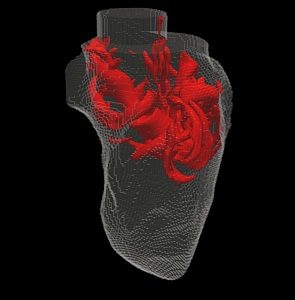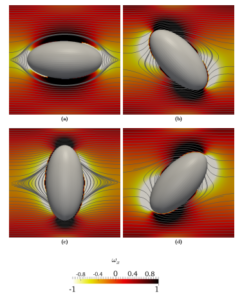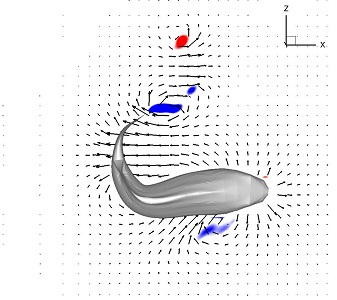Suspensions are ubiquitous in nature (e.g., milk, blood, crude oil) and in different industries (e.g., food or pharmaceutical). Understanding how the suspended particles affect the macroscopic flow and properties of the suspension is the prerequisite to design and optimize the flow and processes which involve suspensions. The shape of the particles can be irregular, e.g., asphaltene aggregates in heavy crude oil, sedimentation and dispersion of particles in oceans/atmosphere, shape-anisotropic particles in colloidal crystals to produce robust photonic band-gap materials, colloidal lithography for nanopatterns, or hierarchically structured porous materials with high surface-to-volume ratios for catalyst supports. We are extending our current numerical tools to simulate the flow of many particles with arbitrary shapes and sizes. The main challenge that we are tackling in simulating many particles with irregular shapes is identifying and modeling their collisions. In contrast to spherical particles, the collision of irregularly shaped particles cannot be determined just by the distance between their centroids.
Research
Our primary research is developing advanced numerical tools for simulating complex engineering and biological flows. Biological flows occur in and around living organisms and their study is critical prerequisite for elucidating and quantifying presumed links between fluid mechanics and particular biological responses and biochemical processes or specific behavioral and/or evolutionary patterns. On the other hand, engineering flow occur in and around engineering structures and machinery whose study is critical in design, optimization, and evaluation of environmental impact of engineering structures and machinery. We have applied our computational tools to a variety of challenging problems. Some of them are discussed below.
Cardiovascular Flows
 We are interested in simulating cardiovascular flows for non-invasive diagnosis of the disease, optimizing biomedical devices and artificial organs, or virtual surgery to guide surgical procedures on a patient-specific basis. Such flows are typically pulsatile with periodic transition to turbulence, non-Newtonian (in small arteries), flowing in complex blood vessel geometries with multiple branching, wide range of scale (form artery- to cell-scale) and non-linear fluid-structure interaction. Therefore, we are interested in developing a multi-scale approach to go from the artery-scale to cell-scale and directly calculate the stresses imposed on the cells by the artery-scale flow. Furthermore, the suspension of deformable blood cells can change the rheological properties of the bulk artery-scale flow. The fluid-structure interaction (FSI) is present in the interaction of elastic arteries/valves as well as deformable cells with the flow.
We are interested in simulating cardiovascular flows for non-invasive diagnosis of the disease, optimizing biomedical devices and artificial organs, or virtual surgery to guide surgical procedures on a patient-specific basis. Such flows are typically pulsatile with periodic transition to turbulence, non-Newtonian (in small arteries), flowing in complex blood vessel geometries with multiple branching, wide range of scale (form artery- to cell-scale) and non-linear fluid-structure interaction. Therefore, we are interested in developing a multi-scale approach to go from the artery-scale to cell-scale and directly calculate the stresses imposed on the cells by the artery-scale flow. Furthermore, the suspension of deformable blood cells can change the rheological properties of the bulk artery-scale flow. The fluid-structure interaction (FSI) is present in the interaction of elastic arteries/valves as well as deformable cells with the flow.
Aquatic Swimming
Fluid-Structure Interaction (FSI)
Fluid-structure interaction (FSI) occurs in many engineering and biological flows. For example, it occurs in flows in elastic blood vessels, heart valves, marine structures such as risers and conductor tubes in oil drilling platforms, civil structures such as bridges and chimneystacks, etc. Numerical simulations can play a major role in understanding FSI physics and the response behavior over a range of controlling parameters. We are actively research on how to improve FSI simulations and search for new and more efficient coupling techniques between the fluid and structure domains.



